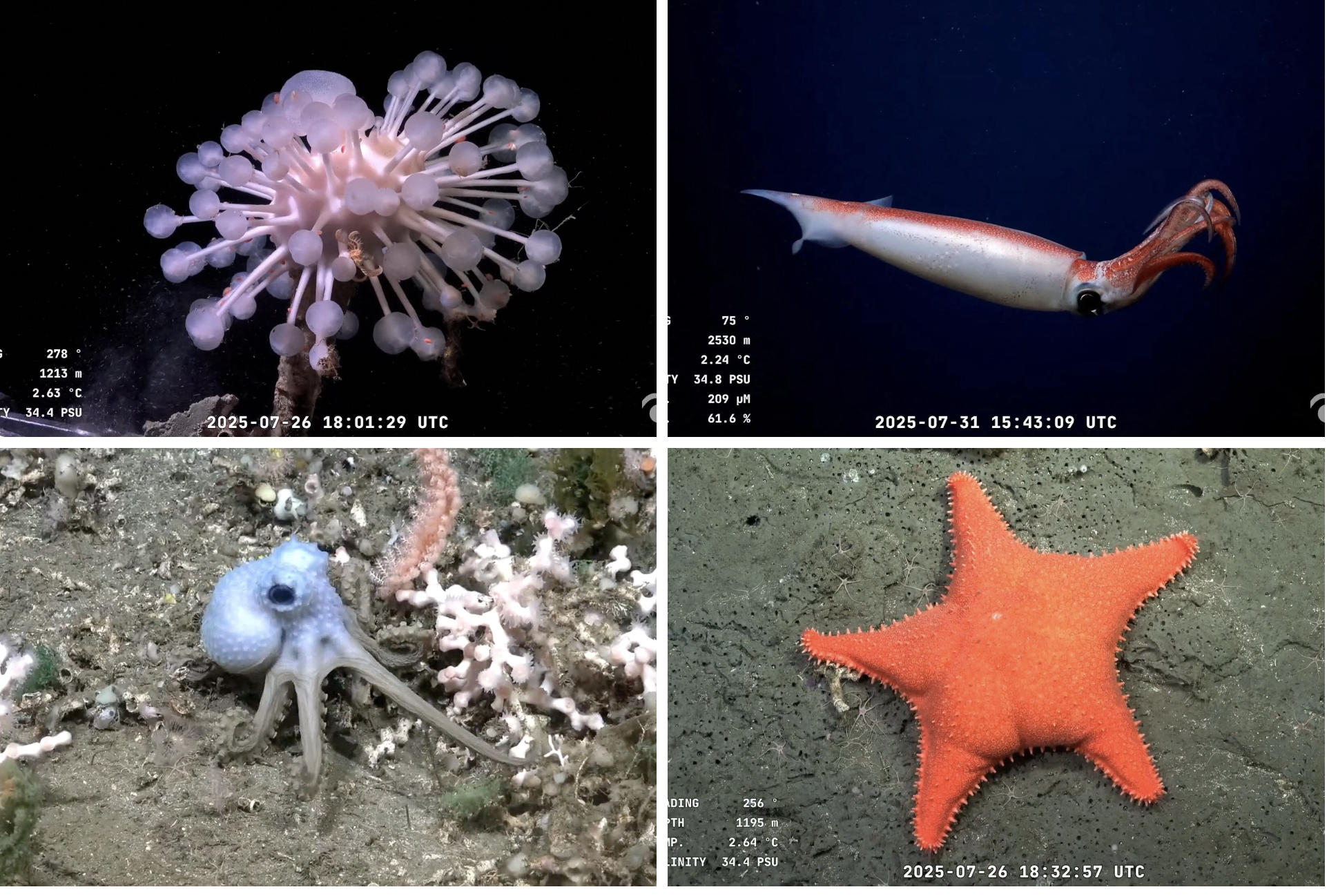Argentinian Scientists Turn the Deep Sea Into a National Conversation
Fifty thousand Argentines were awake at 4 a.m.—not for a soccer match, a concert, or an election. They were watching a starfish.
Nearly 4,000 meters beneath the surface, in the icy black of the Mar del Plata Canyon, a remotely operated vehicle streamed live images of creatures most people didn’t know existed: sea spiders with too many legs, corals shaped like chandeliers, and a squat sea cucumber nicknamed “batatita.”
Memes exploded, kids started drawing deep-sea animals, and suddenly the abyss was on the front page of The New York Times. How did a quiet science mission turn into a national obsession?
The “Talud Continental IV” expedition began as a scientific mission—25 Argentine researchers and their partners from the Schmidt Ocean Institute mapping one of the most remote ecosystems on Earth to guide conservation, understand threats like pollution, and inform national marine policy. But something unexpected happened: the livestream from the remotely operated vehicle, SuBastian, captured the public imagination. The quiet science mission became a cultural phenomenon, turning distant, invisible life into something personal, emotionally resonant, and impossible to ignore.
Here are five surprising ways the deep sea took over Argentina’s imagination:
50,000 People Connected at 4 a.m. to Watch the Deep Sea
For most Argentines, the Mar del Plata Canyon was just a name on a map. Through the livestream, it became a vivid, shared space—tens of thousands of people stayed up through the night to watch alien-looking creatures glide across the ocean floor. Viewers connected emotionally, naming the animals: a starfish became “la estrella culona,” and a squat sea cucumber was dubbed “batatita.” The deep sea became personal, relatable, and unforgettable.
The Internet Can’t Resist Finding Patricio in the Deep Sea
When a sea star resembling SpongeBob’s Patrick appeared on camera, memes flooded social media. “Patricio” was celebrated as a proud Argentine, linked to the nation’s three-star football championship, and declared “one of ours” living in the deep sea. Humor and awe combined to make marine science impossible to ignore—memes spread, merchandise appeared, and even a video game was developed.
A Starfish Triggered a Political Debate
“La estrella culona” became more than a meme. It sparked discussions on scientific sovereignty, research funding, and Argentina’s role in protecting its marine ecosystems. During one broadcast, a scientist explained how years of research had strengthened Argentina’s territorial claims before the United Nations. Alongside “batatita,” the creatures reminded the nation that even the smallest beings can ignite big conversations.
“Nadia Coralina,” the Star of the Underwater Stream
Marine biologist Nadia Cerino, affectionately nicknamed “Nadia Coralina” by viewers, became a guiding voice for the expedition. Her calm, engaging explanations revealed the mysteries of the deep sea while conveying wonder, connection, and pride. During the final dive, visibly moved, she reminded viewers that science is not just about data—it’s about curiosity, imagination, and belonging.
Thousands of Kids Drawing Species and Playing Scientist
Across Argentina, children picked up pencils and crayons to sketch newly discovered deep-sea creatures. Others built makeshift submarines and used flashlights as ROV lights, narrating their own “dives” inspired by the expedition. In classrooms, teachers streamed the footage, turning science into play and planting the seeds for a new generation of explorers.
From the ocean floor to living rooms, classrooms, and social media feeds, the “Talud Continental IV” expedition showed how beauty, humor, and discovery can mobilize public attention, foster national pride, and connect science to society’s most pressing challenges.

